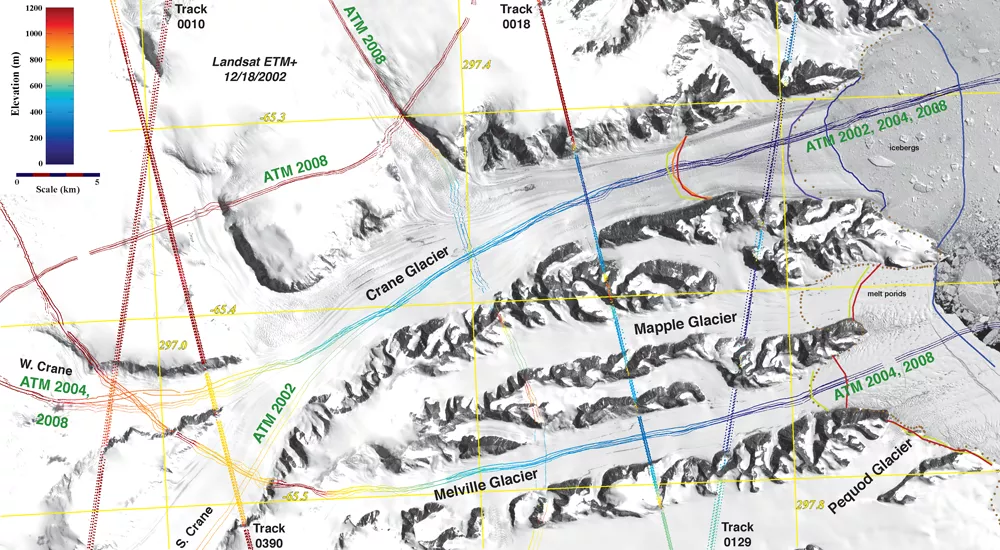By Jane Beitler
Once Earth’s frozen features were mostly solid and holding still, or at least moving very slowly and predictably, like the patient creep of a glacier towards its outlet. But now summer’s thaw is beginning to outpace winter’s freeze up, most strongly observed in the waning of Greenland’s ice sheet and of summer Arctic sea ice cover. Around the Antarctic Peninsula and West Antarctica, ice shelves are collapsing, the ice sheet is thinning, and glaciers are speeding up.
The cryosphere is on the move. These changes are too slow for a video camera to capture, but satellites can capture that time lapse of long-term changes seen in Earth’s coldest regions. Perhaps the longest and most consistent series of satellites is Landsat, and early next year a new Landsat will fly. This new eye in the sky promises not just to keep the record going, but to provide more detail on Earth’s forests, oceans, croplands, savannahs, snow, ice, and more.
A bluer vision
NSIDC scientist Ted Scambos was recently named to the Landsat Science Team, which advises NASA and the USGS on Landsat operations. “Landsat has been a great mapping tool,” he said. “But it has now emerged as the best climate change detection system we've got as well.” The newest Landsat, planned for launch in early 2013, will be the eighth in the series.
Scambos and his Landsat team colleagues in other Earth science fields will help check that data from the new instrument aligns with past data, so that researchers have an uninterrupted record of the planet. They also provide guidance to the Landsat mission that will help Landsat reach its full potential for science. Landsat has always been powerful for its high resolution, and for its range of spectral channels. It can see in the visible light spectrum, like a photograph, and it can also see in the infrared to detect thermal information, invisible to the eye but valuable for studying features of oceans and forests in greater detail.
The upcoming satellite also has two extra bands, giving it higher sensitivity. With Landsat data, scientists like Scambos were able to map ice flow on Antarctica, helping to show that glaciers were accelerating the flow of ice to the ocean after the floating ice shelves in front of them broke up. Landsat 8 will be even better for studying changes in the ice sheets, Scambos said. “The new bands, and the new precision of the sensor, are going to help in a lot of areas,” Scambos said, "especially the new blue channel. We'll be able to map melt water lakes on the ice sheets and ice shelves in fantastic detail." Other uses include snow and ice surface mapping, ice melt detection and melt pond measurement, and thermal mapping of debris-covered glaciers and the ocean surface near large floating glaciers.
For more information on the Landsat Program, visit their Web page at landsat.gsfc.nasa.gov. For more information on Ted Scambos's research, see nsidc.org/research/bios/scambos.html.

